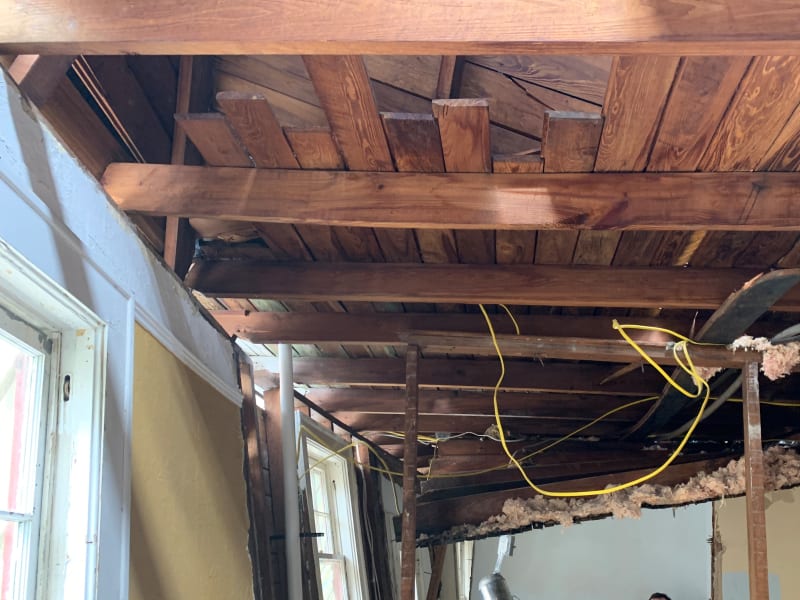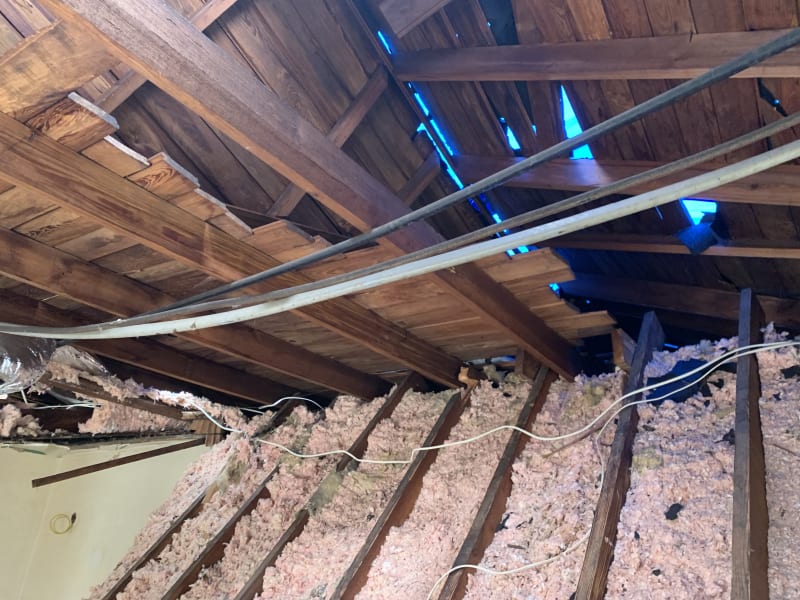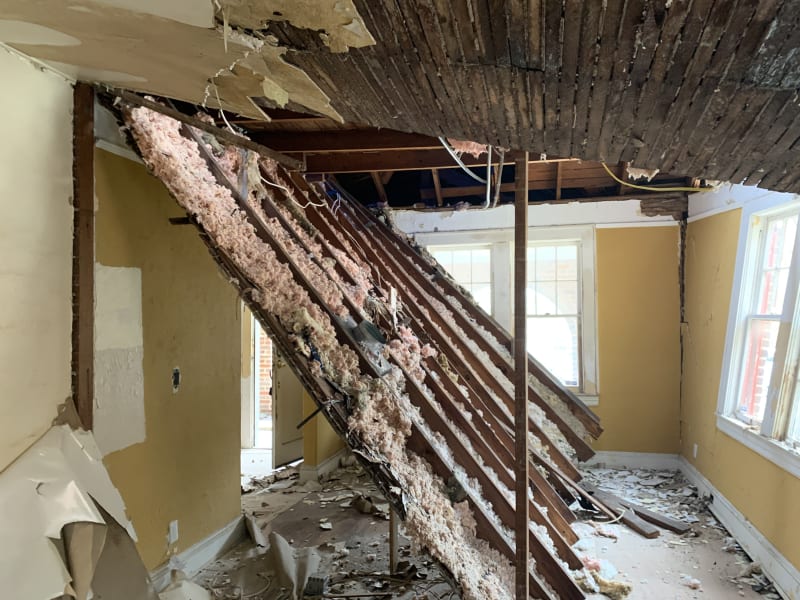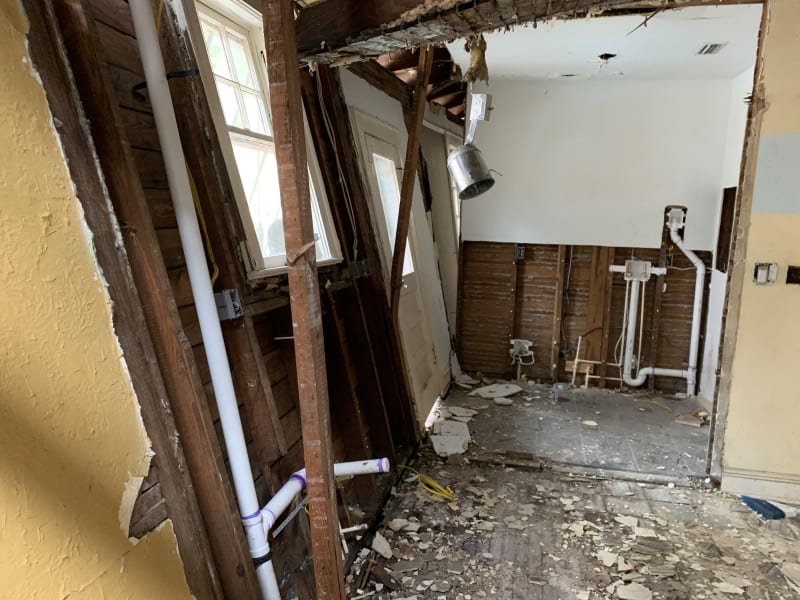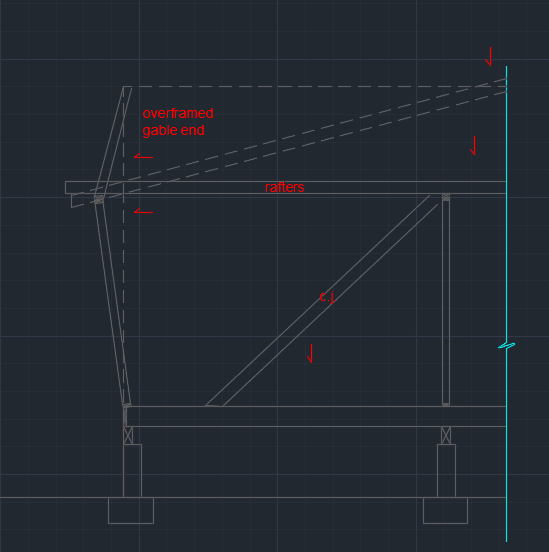kmart30
Structural
- Apr 28, 2016
- 183
An exterior wood framed wall with typical brick veneer has failed (pushed out from loading up too many shingles)and needs to be temporarily shored up. Picture attached. It looks like they at least attaching the shoring to the framing but they are using the slab on grade to prevent the studs from kicking out. Anyone seen a similar situation or have a better alternative?

